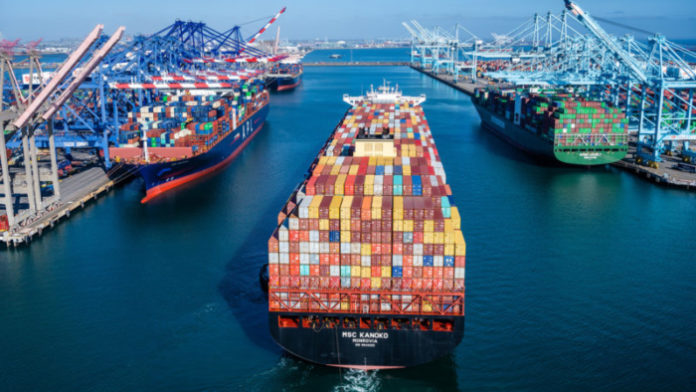
-
Convergence of falling spot rates and strong contracted rates in 2022 on the Far East-US West and East Coast routes is offering opportunities to shippers and liners, Xeneta reports
-
Spot rates on the Far East-East Coast trade have shed over US$3,400 per 40-foot box, while West Coast-bound have dipped by US$3,200, the rate benchmarking platform says
-
This pattern is seen on several key global trade corridors, notes Oslo-based Xeneta
Convergence of falling spot and strong contract rates on the Far East to US West Coast and East Coast ocean freight trades has taken place, offering business opportunities for carriers and shippers alike, the latest market intelligence from Xeneta indicates.
The short-term spot rates from the Far East to the East Coast this year have now shed more than US$3,400 per forty-foot equivalent units (FEU), a 26.9% drop, while those to West Coast have fallen by US$3,200 or 33.1%, Oslo-based Xeneta said in a report on Hellenic Shipping.
The report said long-term rates, in contrast, have shot up with contracted prices soaring 103.5% for East Coast trades and 96.9% for the West Coast, offering “new strategic openings” for ocean carriers and their customers, Xeneta chief analyst Peter Sand was quoted as saying.
“We’re noticing a similar pattern across a number of key global trade corridors. The spread between the long- and short-term rates is diminishing and, in some cases, turning negative. This is of interest to both sides in the ocean freight value chain,” Sands said.
“On the carrier side, they might be able to tempt those shipping large volumes from the Far East to the US to sign up to long-term contracts, instead of playing the spot market. On the other hand, the falling spot price gives shippers looking to improve supply chain resilience an opportunity to strike a better balance between long- and short-term rate strategies. Those with an eye on the latest market data will be at an advantage here.”
Sands said long-term rates for the trades are “moving sideways” currently, while spots continue to dip with short-term rates on the West Coast routes are already below long-term prices. He expects the same “negative spread” to take place later in August on the Far East-US East Coast trade.
“It’ll be interesting to see what happens to the long-term rates in this climate of change,” he said.
As of 9 August, spot rates on the Far East- US West Coast trade are US$6,400 per FEU, while for the East Coast, and they are US$9,300 per FEU.
This shows the current strength of the East Coast routes, with an almost US$3,000 premium, reflecting the impact of carriers shifting capacity to counter congestion issues and bottlenecks on the West Coast. Traditionally, the cost of shipping a 40-foot container from the Far East to the US East Coast was just US$1,000 higher than to the West Coast.
Long-term rates to the East Coast are also above those of its sister coast, with a US$1,900 per FEU premium as of August 9, said Oslo-based Xeneta, a leading ocean and air freight rate benchmarking and market intelligence platform.
RELATED READ: Cargo rates up 170% y-o-y on buoyant June contract prices




